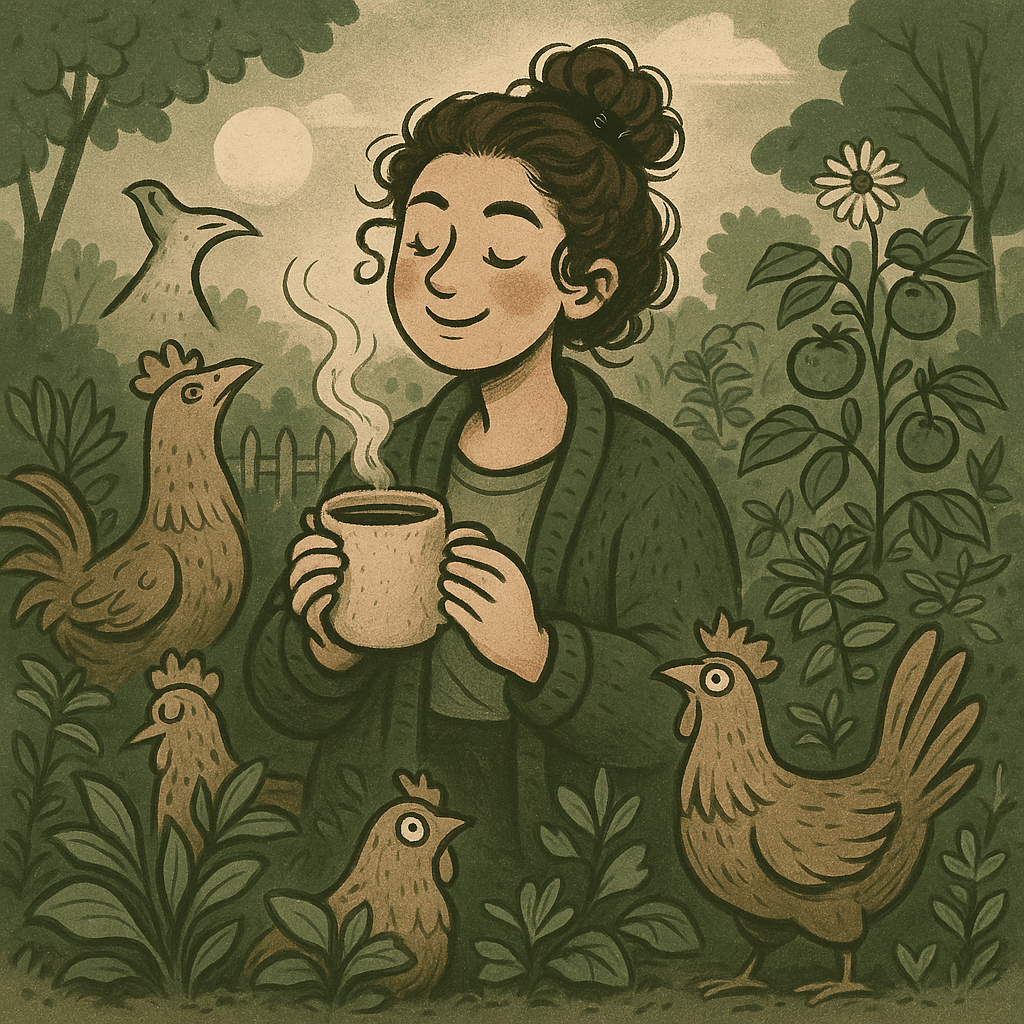
This site uses affiliate links and I may earn a small commission when you use my links and make a purchase without incurring additional fee yourself. Many thanks for supporting this website.
Please click here for more details.
Can Chickens Really Drown in the Rain? A Guide for Curious and Cautious Chicken Keepers
When storm clouds roll in and raindrops begin to fall, it's natural for backyard chicken keepers to worry about their flock. One of the more bizarre (yet oddly persistent) questions that tends to pop up is: Can chickens actually drown in the rain?While this sounds like something straight out of a cartoon, the myth continues to circulate in homesteading circles and online forums. So, let’s unravel the truth with some science, savvy care tips, and just a splash of chicken logic.
Can Chickens Really Drown in the Rain? A Guide for Curious and Cautious Chicken Keepers
Where Did the Myth Come From?
The Curious Case of the Upward-Gazing Chicken
The story goes that chickens are so daft, they’ll stare up at the sky during a downpour, letting the rain flood their nostrils and drown them. This idea likely came from a mixture of misunderstandings and watching chickens behave... well, like chickens. Yes, they may stand in the rain. Yes, they may appear blissfully unconcerned. But no, they’re not dying from open-mouthed rain-gazing.
Feathered Facts: The Real Science
Biologically speaking, chickens are equipped to deal with rain. Thanks to their preen gland (located near the base of their tail), chickens produce natural oils that they spread through their feathers while grooming. These oils help create a water-resistant barrier—basically nature’s raincoat. This adaptation allows chickens to endure rainy conditions without their feathers soaking through like a sponge.
Misconceptions About Chickens and Rain
The Anatomy Confusion
People often assume chickens have poor drainage systems—quite literally. While it’s true that chicks and young birds are more susceptible to cold and damp, adult chickens have evolved pretty impressive weatherproofing. They’re more likely to seek shelter than to risk a downpour-induced demise.
Chickens Know When to Duck and Cover
Contrary to popular belief, most chickens do have the sense to head to shelter when it starts raining. Even the fluffiest of breeds (like Silkies, who admittedly look like they’ve never seen a brush) will find cover if they feel uncomfortable. It's all about instinct and survival—not stupidity.
How Chickens Behave in Wet Weather
Rainy Day Rituals
Depending on the intensity of the rain, chickens might either continue their foraging as if nothing happened or make a beeline for dry cover. You’ll often find them tucked under trees, inside their coop, or hiding beneath any overhang they can find.
Built for Weathering the Storm
A chicken’s feathers work like a two-layered fortress. Soft down feathers close to the skin trap warmth, while tougher outer contour feathers deflect rain. This design helps them regulate their temperature even in soggy or cold conditions. And for free-range chickens? They'll often instinctively avoid lower, flood-prone areas, preferring high ground to avoid wet feet and worse.
Breed-Specific Behaviors
Some chickens handle rain better than others. Hardy breeds like Australorps, Rhode Island Reds, and Orpingtons usually don’t bat an eyelid at a drizzle. But crested breeds like Polish chickens or Silkies may need extra protection due to their fluffier, more absorbent feather types.
Real Risks That Come from Wet Weather
It’s Not Drowning—It’s Hypothermia
The real danger isn’t drowning. It’s hypothermia, especially when the temperature drops and wet feathers stop insulating effectively. This risk is especially high for chicks or molting chickens with patchy plumage. If your chickens are cold and wet for too long, their core body temperature can drop dangerously low.
Rain’s Effect on Egg Production
Chickens feeling the chill and stress of damp conditions might reduce their egg output—or stop altogether. Wet bedding and muddy runs can lead to stress, which impacts laying consistency and shell quality. Drier coops mean happier hens and more breakfast omelets.
Increased Disease Risk
Moisture invites all kinds of issues: respiratory illness, coccidiosis, mites, and fungal infections thrive in damp environments. Standing water can quickly become a breeding ground for bacteria. A wet coop is a health hazard, not just an inconvenience.
How to Keep Chickens Safe and Dry During Rain
Coop Prep 101
The first line of defense is a weatherproof coop. Ensure your coop has a solid, leak-free roof, good drainage around the base, and plenty of ventilation to avoid trapped humidity. Sloped roofs, raised bases, and well-placed windows or vents are essential.
Build a Rain-Resistant Chicken Run
Install tarps or corrugated roofing over parts of your chicken run to give your flock somewhere dry to hang out. Make sure there's enough shelter space for all your birds—chickens don’t love huddling like sardines unless they’re roosting.
Smart Placement Matters
If possible, place your coop and run on higher ground to avoid flooding. Use gravel or sand in muddy areas and regularly change out bedding. Wood shavings or hemp are great for absorbing moisture without compacting into sludge.
Daily Rainy Day Care Tips
On especially nasty days, keep a close eye on your flock. If any chickens get soaked, towel them off or gently dry them with a pet-safe blow dryer on low heat. Some chicken keepers even use dog jackets or heating pads for vulnerable birds. Bonus tip: Encourage preening by offering a clean dust bath indoors during rainy spells.
Myth-Busting Bonus Round
Myth: Chickens Can’t Swim
Truth: They can float for short periods, but they’re not natural swimmers. Chickens don’t paddle well and can panic quickly. A shallow kiddie pool for supervised enrichment? Sure. A backyard pond? Not ideal.
Myth: Chickens Hate Rain
Truth: Some do, some don’t. It depends on the bird. Just like dogs and toddlers, every chicken has their own personality. Some hens will gleefully scratch in puddles, while others sprint for the nearest dry perch.
Myth: Chickens Need Heat Lamps Year-Round
Truth: Nope. Chickens are more cold-tolerant than you think. It’s moisture, not cold alone, that causes most problems. Focus on dry bedding and good ventilation first.
Educating New Flock Owners: Share the Knowledge
For newer chicken keepers, understanding your flock’s behavior in various weather conditions is essential. Don’t just follow internet folklore. Engage with seasoned keepers through forums, local groups, or backyard poultry communities to stay informed.
Final Cluck: The Truth About Chickens and Rain
So, do chickens drown in the rain? Not unless they’re stuck in a downpour with no shelter and underlying health issues. The myth of chickens gazing skyward until they drown is just that—a myth. But rainy weather does come with its own set of flock-management challenges.
With proper shelter, good coop hygiene, and a watchful eye, your chickens will thrive—rain, shine, or sideways British drizzle. Just make sure they’ve got a dry place to roost, fresh bedding, and your usual doting chicken-parent attention. Your flock will thank you—with clucks, struts, and (hopefully) a steady supply of eggs.

Zia Paola
Zia Paola is a burnout survivor, chicken enthusiast, and former veterinary surgeon turned digital mischief-maker. She writes from her semi-chaotic smallholding in the UK, where she splits her time between unhinged chickens, rustic recipes, and helping others reclaim their lives from hustle culture. You can find her ranting lovingly about slow living, food, and freelance freedom at www.badinfluenzia.com.

Get mildly chaotic life advice, anti-burnout rants, and unsolicited chicken wisdom delivered straight to your inbox. No fluff. Just feathers.
Created with ©systeme.io



